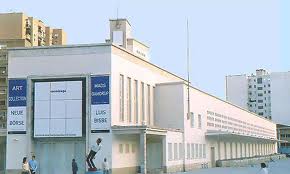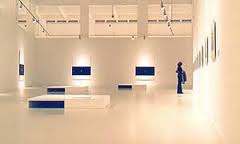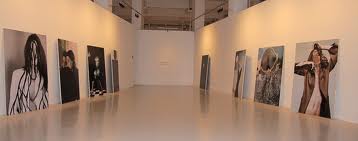Spanish Museums: Málaga: Centre of Contemporary Art

The Centre of Contemporary Art of Málaga (Centro de Arte Contemporáneo de Málaga) is a project which was set up by the government of Málaga and is dedicated to the showcasing of the art fron the 20th and 21st Centuries. This Spanish museum prides itself on its open-minded attitude towards art and artistic trends.
History
The Centre of Contemporary Art of Málaga is a relatively new museum, opening its doors in 2003 with the help of Princess Cristina and her husband. However it is also modern in the way it is run. The museum is run by a private organisation, with private-sector efficiency, but with the goals and philosophy of a public body. This innovative business model has led to the increasing success of the museum.
The museum was designed to be much more than just an art gallery, it was designed to become a cultural hub for the city of Málaga. The organizers and planners of the museum realized that Málaga was a gateway to both Andalusia and the rest of Spain, with its airport receiving over nine million travellers every year. These tourists and travellers, alongside the residents of Málaga were therefore the targeted audience of this museum. Furthermore, the researchers found that the majority of the travellers and tourists in Málaga were from Europe and that many were interested in art. This lead to the creation of the Centre of Contemporary Art of Málaga project.
The Building
The museum is housed in the old Wholesaler's Market of Málaga which can be found on the left bank of the Guadalmedina River estuary. Today this section of the city is located in the centre; hence the museum has a perfect location for attracting visitors.

The original market's construction project began in 1927. The building was designed by Luis Gutiérrez Soto whose plan was to build the market on reclaimed land from the river's estuary. However, due to financial difficulties, the actual building of the market did not commence until 1939, when they were supervised by the town architect, Eduardo Estévez Monasterio.
The market was completed and in 1944 the market opened its doors for business. The Wholesaler's Market continued to be used for that purpose up until the 1980s. During this decade, a new market was built to meet the demands of the modern city. This left the original Wholesaler's Market without a function or purpose and in an ever deteriorating state.
Therefore in 1987, the market was declared to be a 'Bien de Interés Cultural' (Item of Cultural Interest). It was many years later, in the year of 2000 that the old market building began to be converted into the museum for which it is used today. The conversion work was undertaken by Miguel Ángel Día. The interior section of the building was designed by the architects Antonio Álvarez Gil and Salvador García García. Today, just under half of the 6,000 square metres of space in the building is used for the exhibition and display of the museum's collection.

The building is quite austere in the way it sticks closely to a functional and Rationalist style of architecture. It contains many straight edges and some Cubist forms. The building plot is actually triangular in shape and so this shape can be seen in the building and its floor plans across the three floors as well. Today the building is considered to be very unique and continues to be a landmark for the city of Málaga.
The Collection
The collection at the Centre of Contemporary Art of Málaga consists in around 400 pieces of artwork, and it often holds many exhibitions of both visual and audiovisual works of art. The museum also puts on various workshops and conferences for the public to attend so as to learn more about contemporary art.
The collection of artists whose work can be found at this Spanish museum are not all Spanish. Some of the international artists represented include Damian Hirst and Louise Bourgeois. However there are of course many works by Spanish artists such as Juan Muñoz and Miquel Barceló.
